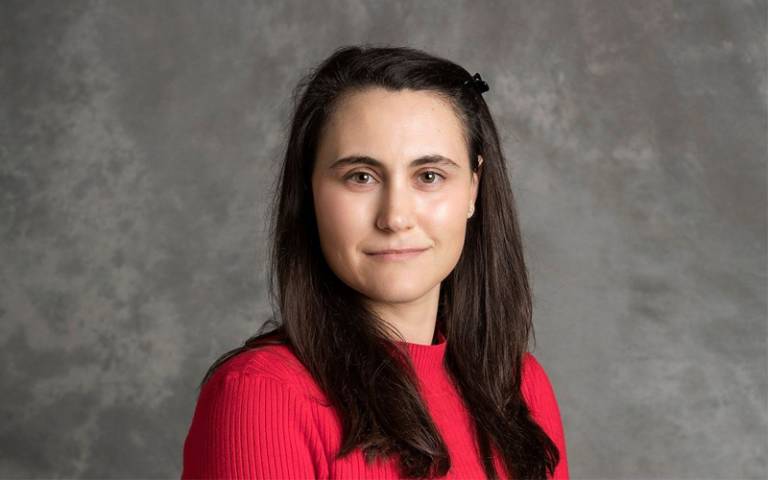Analysis: England’s R number is creeping up – does that mean a second wave is on the way?
15 July 2020
Dr Jasmina Panovska-Griffiths (UCL Epidemiology & Health) discusses the R number, the possibility of a second wave and whether Covid-19 has superspreading potential.

Since the UK government began lifting pandemic lockdown restrictions, there have been warnings that going too fast would allow the coronavirus to start spreading again. And ever since, there have been reports about parts of the country that have seen the R number – a key measure of the spread of the disease – rise above the crucial threshold of 1, which would mean case numbers start rising again.
Recent data has suggested that the R number in south-west England may be as high as 1.1, with the overall number for England rising to between 0.8 and 1, compared to being between 0.8 and 0.9 the week before. Is this increase in R a sign that the country could be heading towards a second wave of COVID-19? The reality is more complex than that.
You may have heard a lot about R – the basic reproduction number – as a metric for tracking the COVID-19 epidemic spread in the UK. It represents the average number of people each infectious person will pass the virus on to, and reflects the rate at which the virus spreads across the population. When R rises above 1, unless action is taken the number of new cases will start to grow exponentially and so, in a population with no immunity, the virus can spread fast. This is what happened in the early days of the pandemic. When R is below 1, each person will infect on average less than one person, implying that gradually fewer people will be affected and the outbreak will eventually die out.
At the onset of the epidemic in the UK, different studies estimated R in the UK to be 2.4, 2.6, around 3, or between 3 and 4. An R value of 3 implies that every infectious person will infect 3 more people, so if there are 100 people infected with the virus they will likely infect 300 more and these will produce another 900 infections.
But when you are comparing locations, the R number alone doesn’t give you the whole picture of what is happening. For example, if R is smaller in one location than another, but had more people infected to being with, the numbers of new infections can be higher. An R value of 2.5 in a population with 150 infected persons will induce 375 secondary infections, which in turn will produce 938 more infections – more than in the previous example where R was 3.
As a result of the lockdown and the reduced social contact that spreads airborne diseases, the number of new cases of COVID-19 in the UK was reduced and R pushed below 1. But as an epidemic progresses and the number of cases starts to decrease, R can be subject to large fluctuations and uncertainty.
Specifically, when the number of cases falls to low levels or if transmission across the country varies significantly, R estimates can fluctuate a lot and so it becomes a less robust way of representing what’s happening.
This means news that R may have increased above 1 again, particularly in specific regions, may not necessarily mean that current public health measures aren’t working or that the disease is about to come roaring back. It may simply mean that we have fluctuations in the reported R value or a slightly increased number of infections in a local area.
Importantly, since R represents an average across settings or populations, it can also miss regional clusters of infection. Another measure, referred to as the K number, can describe how much of the spread of a disease is occurring in these kind of localised clusters.
A lower K number can indicate that more transmission is coming from a small number of people, potentially from superspreading events where many people are infected from one or just a few starting cases. These events can increase the R number locally but may not indicate that transmission of the disease is increasing in general. And we should also remember that values reported today, are often an indication of what has happened at least a week ago.
More data needed
Initial analysis suggests the COVID-19 pandemic may have a low K number and that the disease may have particular superspreading potential. While further work is required to explore how this might apply to the UK, these results reminds us how important it is to consider other measures of the virus’s spread alongside R, particularly as more localised outbreaks emerge. These include number of cases, hospitalisations and deaths on a national and local level, and the K number.
Crucially, while we should keep track of R in different locations and from one week to the next, we also need to be wary of the fact it becomes less reliable as the epidemic slows down. A slightly higher R number may not necessarily mean a second wave is coming right now or that recent easing of the lockdown must be reversed.
But equally, we mustn’t forget that there are still around 400 people catching the virus each day in the UK. So even when R is below one, there is still an ongoing risk of transmission. This could be reduced by slowing the lockdown easing and doing more to encourage people to adhere to the existing rules. Models are predicting that a second wave may occur and returning to pre-COVID-19 behaviour is still far away.
This article was first published in the Conversation on 15 July.
Links
- Dr Jasmina Panovska-Griffiths’ academic profile
- UCL Department of Applied Health Research
- UCL Institute of Epidemiology & Health
- UCL Faculty of Population Health Science
 Close
Close

